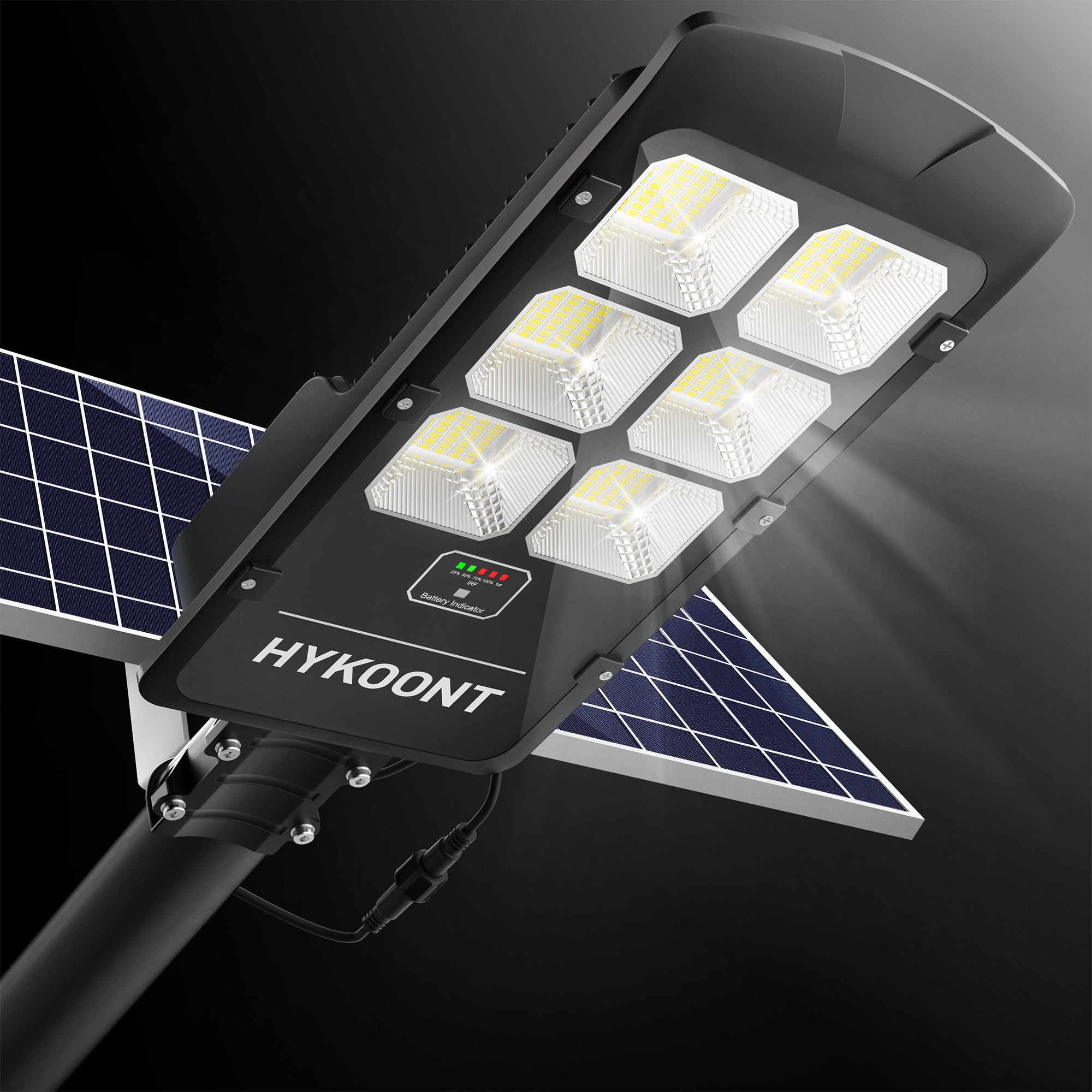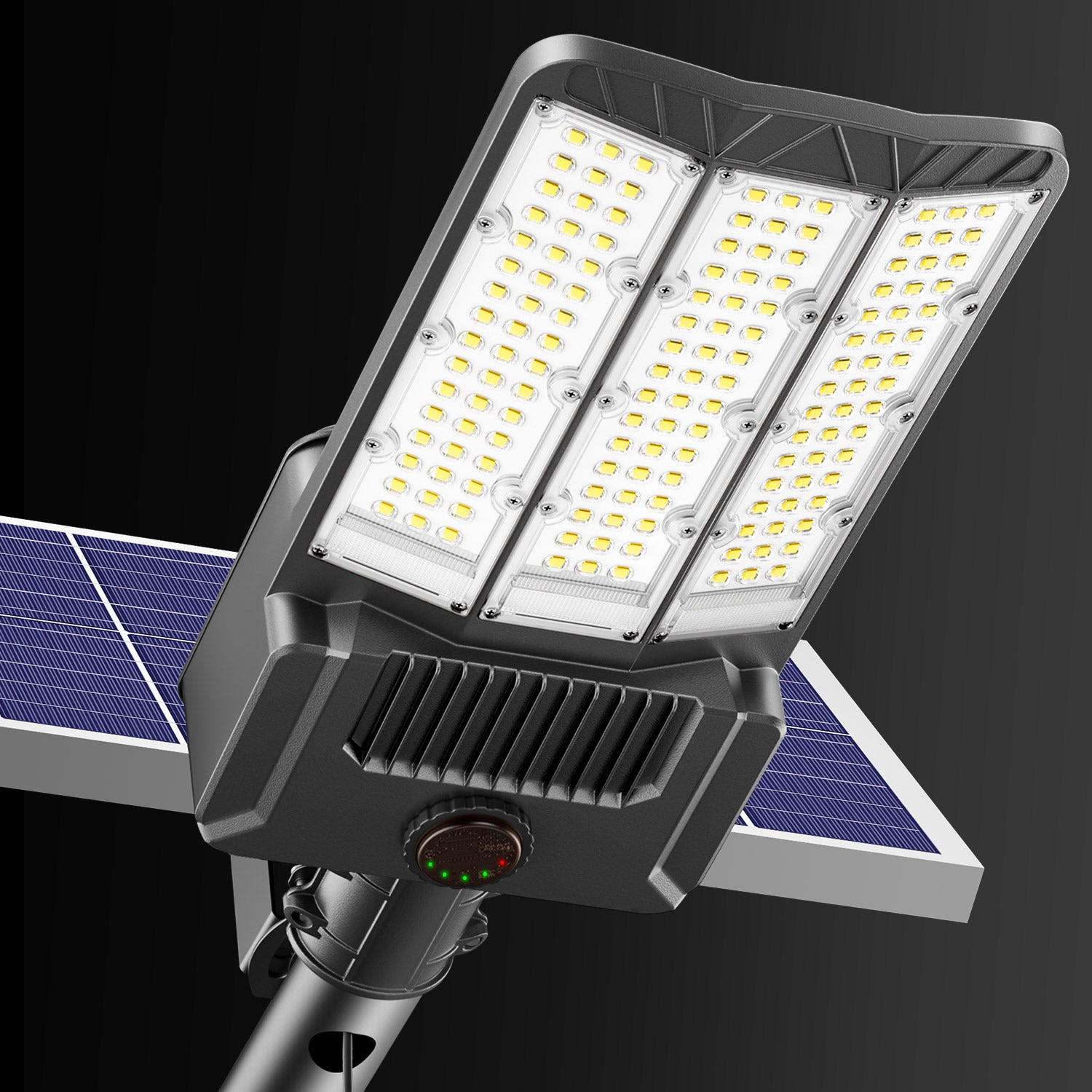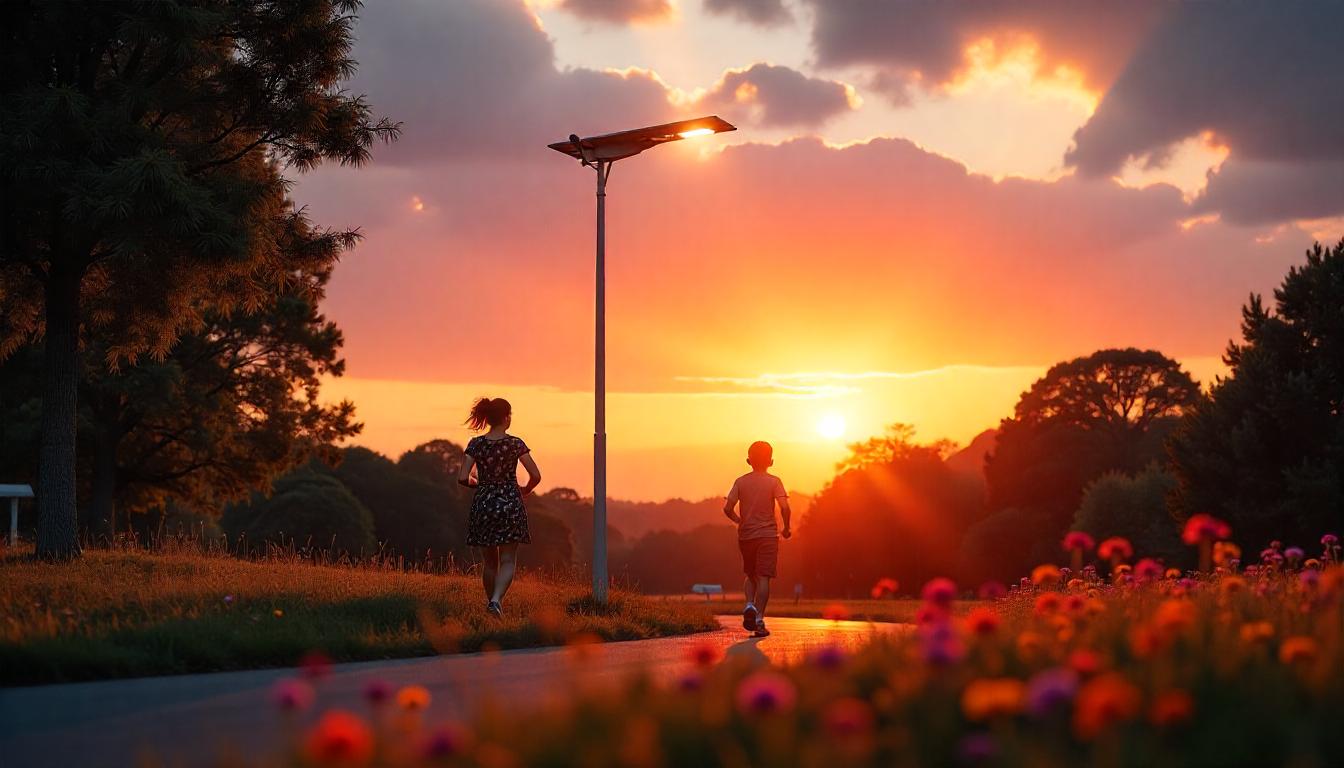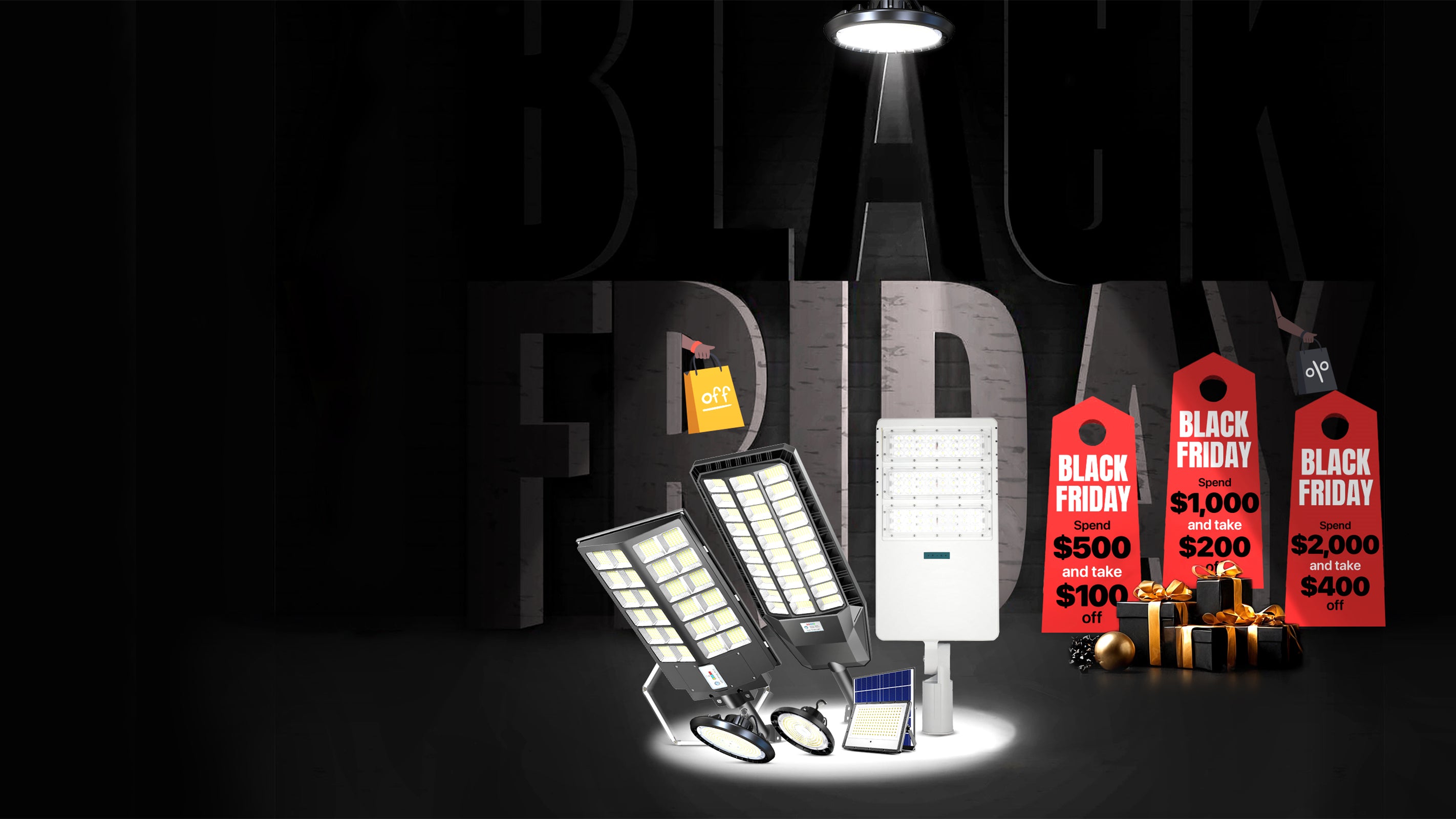لا تحتاج المصابيح الشمسية بالضرورة إلى ضوء الشمس المباشر للعمل، ولكنها تتطلب الوصول إلى الضوء - ضوء الشمس المثالي - للشحن بشكل فعال. تعمل المصابيح الشمسية عن طريق امتصاص طاقة الضوء من خلال الخلايا الكهروضوئية (PV)، والتي تحولها إلى كهرباء مخزنة في بطارية قابلة لإعادة الشحن. تعمل هذه الطاقة المخزنة على تشغيل الضوء في الليل. في حين يوفر ضوء الشمس المباشر أقصى قدر من الطاقة للشحن، لا تزال المصابيح الشمسية تعمل في المناطق المظللة أو خلال الأيام الملبدة بالغيوم، وإن كان ذلك بكفاءة منخفضة. دعنا نستكشف كيف تعمل المصابيح الشمسية في ظروف الإضاءة المختلفة وكيفية تحسين أدائها.
1. ضوء الشمس المباشر مقابل الضوء غير المباشر
- ضوء الشمس المباشر: تعمل مصابيح الطاقة الشمسية بشكل أفضل مع ضوء الشمس المباشر، الذي يوفر أكبر قدر من الطاقة لخلايا الطاقة الكهروضوئية. في يوم مشمس مشرق، تتطلب معظم مصابيح الطاقة الشمسية 4-6 ساعات من ضوء الشمس المباشر للشحن الكامل، وهو ما يوفر عمومًا طاقة كافية لإبقاء الضوء قيد التشغيل لمدة 8-12 ساعة في الليل.
- الضوء غير المباشر أو المنتشر: يمكن أيضًا شحن المصابيح الشمسية في ضوء غير مباشر، مثل الأيام الملبدة بالغيوم أو الملبدة بالغيوم. ومع ذلك، في هذه الحالة، يتم شحنها ببطء أكبر وقد لا تصل إلى سعتها الكاملة، مما يؤدي إلى أوقات إضاءة أقصر. يمكن لأشعة الشمس غير المباشرة شحن المصابيح الشمسية بكفاءة تصل إلى حوالي 60-80% مقارنة بأشعة الشمس المباشرة.
2. كيف تعمل الأضواء الشمسية في الأيام الملبدة بالغيوم
في الأيام الملبدة بالغيوم أو الممطرة، لا تزال الخلايا الكهروضوئية تمتص الضوء المنتشر ولكن بمعدل أقل بكثير. ورغم أن الأضواء لن تعمل بنفس الكفاءة، إلا أنها ستظل تجمع طاقة كافية لتوفير بعض الإضاءة في الليل، على الرغم من أن مدتها وسطوعها قد يتضاءلان. وفي المناطق التي تكثر فيها الغيوم، يمكن أن تساعد الأضواء الشمسية ذات البطاريات عالية السعة أو الألواح الشمسية الأكثر كفاءة في التخفيف من هذا التأثير.
3. استخدام الأضواء الشمسية في المناطق المظللة
يمكن أن تعمل الأضواء الشمسية في المناطق المظللة، ولكن على غرار الظروف الغائمة، فمن المحتمل ألا تتلقى طاقة كافية لشحنها بالكامل. فيما يلي بعض الطرق لاستخدام الأضواء الشمسية في الأماكن المظللة بشكل أكثر فعالية:
- اختر الأضواء الشمسية ذات الألواح القابلة للإزالة: تتميز بعض الأضواء الشمسية بألواح قابلة للفصل يمكن وضعها في ضوء الشمس المباشر حتى لو تم تركيب الضوء نفسه في منطقة مظللة.
- استخدم الأضواء الشمسية ذات الألواح الأكبر أو البطاريات ذات سعة أعلى: تتمتع الأضواء ذات الألواح الشمسية الأكبر أو البطاريات ذات سعة أعلى بقدرة أفضل على امتصاص الطاقة بكفاءة في ظروف الإضاءة المنخفضة، مما يؤدي إلى تعظيم الشحنة التي تتلقاها.
- خذ في الاعتبار وضع الأضواء للحصول على التعرض الأمثل للضوء: إذا كانت المنطقة المظللة تتلقى ضوء الشمس الجزئي، مثل من خلال فروع الأشجار المرقطة، فقم بوضع الأضواء لتحقيق أقصى قدر من التعرض الذي تتلقاه.

4. الشتاء وساعات النهار الأقصر
خلال فصل الشتاء أو في المناطق ذات ساعات النهار الأقصر، يكون لدى المصابيح الشمسية وقت أقل لامتصاص ضوء الشمس. وقد تؤثر نافذة الشحن القصيرة هذه على أدائها في الليل. ومع ذلك، هناك طرق لمواجهة هذا:
- اختر الأضواء الشمسية ذات مصابيح LED منخفضة الطاقة: يمكن للأضواء ذات مصابيح LED ذات الكفاءة العالية أن تعمل لفترة أطول بشحنة واحدة.
- استخدم نماذج ذات سعة بطارية أعلى أو بطاريات مزدوجة: تخزن البطاريات ذات السعة العالية المزيد من الطاقة، مما يسمح للأضواء بالاستمرار لفترة أطول حتى مع ضوء الشمس الأقل.
- المصابيح الشمسية الهجينة: تحتوي بعض المصابيح الشمسية المتقدمة على خيارات بطارية احتياطية تسمح لها بالعمل حتى عندما يكون ضوء الشمس نادرًا. تتحول هذه المصابيح تلقائيًا إلى طاقة البطارية، مما يضمن بقائها مضاءة طوال الليل.
5. الوضع الأمثل لتحقيق أقصى قدر من الكفاءة
للحصول على أفضل أداء من الأضواء الشمسية ، من الضروري وضعها في مكان يمكنها من امتصاص أكبر قدر ممكن من الضوء. وفيما يلي بعض النصائح الخاصة بالوضع:
- تجنب العوائق: ضع الأضواء الشمسية بعيدًا عن المباني أو الأشجار أو الأسوار التي يمكن أن تلقي بظلالها على الألواح، وخاصة خلال ساعات الذروة خلال النهار.
- التعرض للجنوب (بالنسبة لنصف الكرة الشمالي): يؤدي توجيه الألواح نحو الجنوب إلى تعظيم التعرض لأشعة الشمس طوال اليوم. وعلى العكس من ذلك، في نصف الكرة الجنوبي، يعد توجيه الألواح نحو الشمال هو الخيار الأمثل.
- الوضع المرتفع: وضع الأضواء على أعمدة أو مناطق مرتفعة يمكن أن يساعد في تجنب تظليلها بواسطة الأشياء أو الهياكل المنخفضة.
6. ابتكارات الإضاءة الشمسية للبيئات ذات الإضاءة المنخفضة
لقد صمم المصنعون مصابيح تعمل بالطاقة الشمسية أكثر كفاءة في جمع وتخزين الضوء، حتى في البيئات التي لا تتعرض لأشعة الشمس. على سبيل المثال، تقدم منتجات الإضاءة الشمسية من Hykoont ألواحًا شمسية عالية الكفاءة تعمل على تعظيم امتصاص الطاقة في ظروف الطقس المختلفة. غالبًا ما تتضمن هذه المصابيح مصابيح LED الموفرة للطاقة وأجهزة استشعار الحركة التي يتم تنشيطها فقط عند اكتشاف الحركة، مما يحافظ على عمر البطارية ويضمن استمرارها طوال الليل.

7. الصيانة لتحسين كفاءة الشحن
يمكن أن تؤدي الصيانة المنتظمة أيضًا إلى تحسين أداء الأضواء الشمسية، وخاصة في ظروف الإضاءة المنخفضة:
- حافظ على نظافة الألواح: يمكن للغبار والأوساخ والحطام أن يمنع أشعة الشمس من الوصول إلى الخلايا الكهروضوئية، مما يقلل من كفاءة الشحن. نظف الألواح الشمسية بانتظام لضمان أقصى قدر من امتصاص الضوء.
- التحقق من صحة البطارية: بمرور الوقت، قد تفقد البطاريات القابلة لإعادة الشحن كفاءتها. إذا لاحظت أن مصابيح الطاقة الشمسية الخاصة بك لا تدوم طويلاً كما كانت من قبل، فقد يكون الوقت قد حان لاستبدال البطاريات بأخرى جديدة ذات سعة عالية.
- حماية الألواح من الثلج أو الجليد: في المناخات الباردة، احرص على إبقاء الألواح خالية من تراكم الثلج أو الجليد الذي قد يحجب ضوء الشمس. وإذا أمكن، ضع الألواح بزاوية تسمح للثلج بالانزلاق بسهولة.
8. بدائل للبيئات ذات ضوء الشمس المنخفض
في المناطق التي لا يصلها ضوء الشمس لفترات طويلة، قد لا تكون مصابيح الطاقة الشمسية التقليدية هي الخيار الأكثر فعالية. بدلاً من ذلك، فكر في حلول بديلة:
- الأضواء الشمسية الهجينة أو القابلة للتوصيل: تأتي بعض الأضواء مع خيارات توصيل للشحن أو تتضمن بطاريات احتياطية يمكن استبدالها أو إعادة شحنها بشكل منفصل.
- الأضواء الشمسية مع الألواح الخارجية: تسمح لك بعض الأضواء الشمسية بتثبيت الألواح بشكل منفصل عن التركيبات، بحيث يمكنك وضع اللوحة في مكان مشمس مع الحفاظ على تركيبات الإضاءة في منطقة مظللة.
خاتمة
في حين أن الأضواء الشمسية لا تحتاج إلى ضوء الشمس المباشر للعمل، إلا أنها تعمل بشكل أفضل عند تعرضها له. في المناطق المظللة أو قليلة ضوء الشمس، يمكن أن يساعد اختيار الأضواء عالية الكفاءة ذات الألواح الأكبر أو البطاريات عالية السعة، مثل تلك المتوفرة من مجموعة الإضاءة الشمسية من Hykoont . إن وضع الأضواء الشمسية عالية الجودة والصيانة والاستثمار فيها والمصممة لأداء منخفض الإضاءة من شأنه أن يزيد من فعاليتها ويضمن توفير إضاءة موثوقة حتى عندما يكون ضوء الشمس محدودًا.





















اترك تعليقًا
This site is protected by hCaptcha and the hCaptcha Privacy Policy and Terms of Service apply.